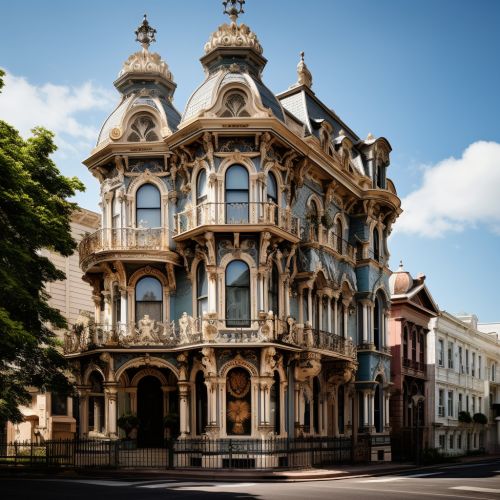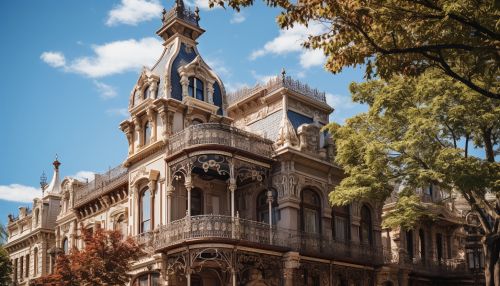Frank Furness
Early Life and Education
Frank Furness was born on November 12, 1839, in Philadelphia, Pennsylvania. He was the son of Unitarian minister William Henry Furness and his wife, Annis Jenks. Frank was the second of four children, and his older brother, William, would later become a notable Shakespearean scholar.
Furness attended the local public schools in Philadelphia before enrolling at the Central High School. After graduating, he studied architecture under the tutelage of local architect John Fraser. Furness' early architectural education was supplemented by extensive travels in Europe, where he was particularly influenced by the Gothic and Renaissance styles prevalent in Italy and France.
Career


In 1866, Furness established his own architectural firm, Furness & Hewitt, in partnership with George Hewitt. The firm quickly gained recognition for its distinctive style, which combined elements of the Gothic and Renaissance styles with a distinctly American sensibility. Furness & Hewitt's early projects included several notable buildings in Philadelphia, such as the Pennsylvania Academy of the Fine Arts and the Fisher Fine Arts Library.
In the 1870s, Furness began to develop his own unique architectural style, which has since been dubbed the "Furnessian" style. This style was characterized by its bold, unconventional designs and intricate detailing. Furness' buildings were often asymmetrical, with complex floor plans and a heavy emphasis on vertical lines. His designs also frequently incorporated industrial materials, such as iron and glass, in innovative ways.
Furness' career reached its peak in the 1880s and 1890s, when he designed some of his most famous buildings. These include the Reading Terminal and the Broad Street Station, both in Philadelphia. Furness also designed numerous private residences, as well as several buildings for the University of Pennsylvania.
Despite his success, Furness' architectural style fell out of favor in the early 20th century, and many of his buildings were demolished. However, his work has since been reassessed, and he is now recognized as one of the most important American architects of the 19th century.
Personal Life
Furness married Fanny Fassitt in 1866, and the couple had six children. Furness was known for his eccentric personality and his love of hunting and fishing. He was also a member of several social clubs in Philadelphia, including the Union League and the Philadelphia Club.
Furness died on June 27, 1912, at his summer home in Media, Pennsylvania. He is buried in the Woodlands Cemetery in Philadelphia.
Legacy
Furness' architectural style has had a lasting impact on American architecture. His innovative use of industrial materials and his bold, unconventional designs helped to pave the way for the modernist movement in the 20th century. Today, Furness is remembered as a pioneer of American architecture, and his surviving buildings are treasured as national landmarks.
